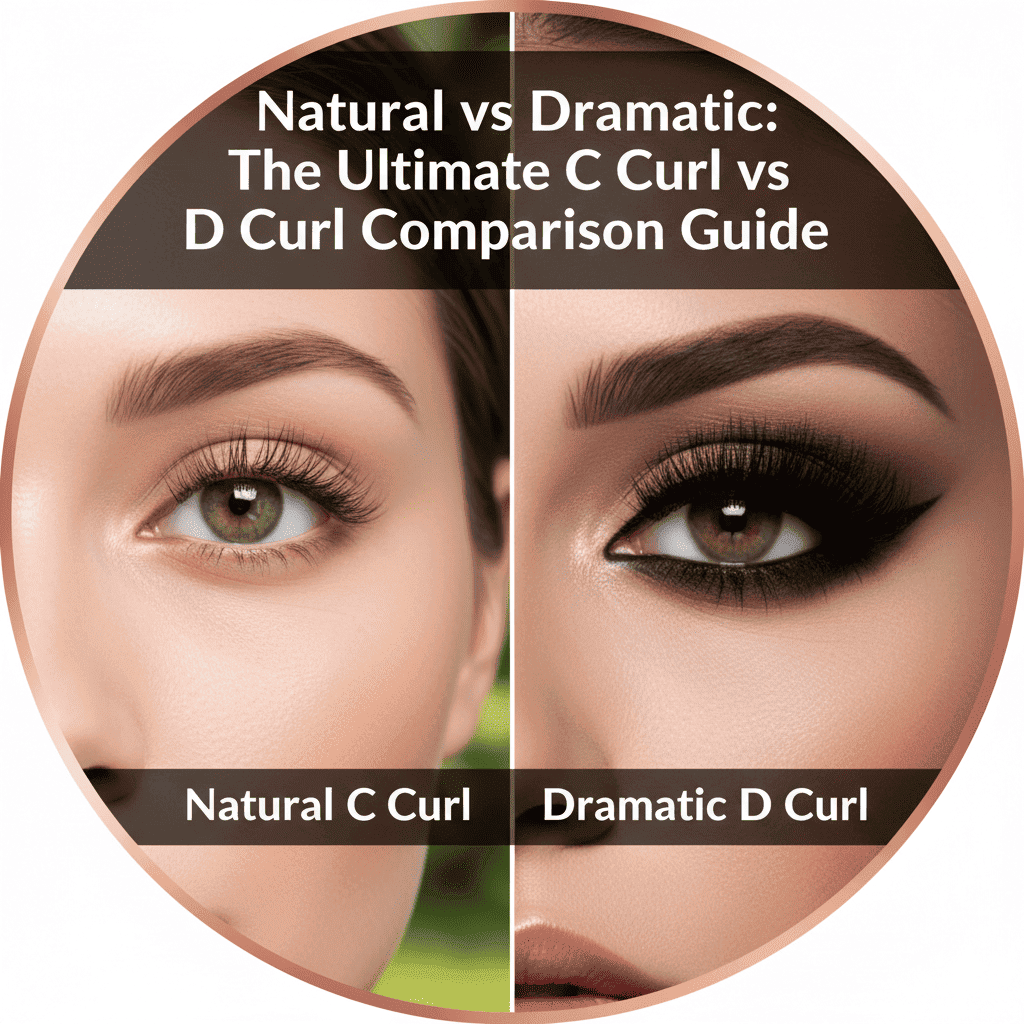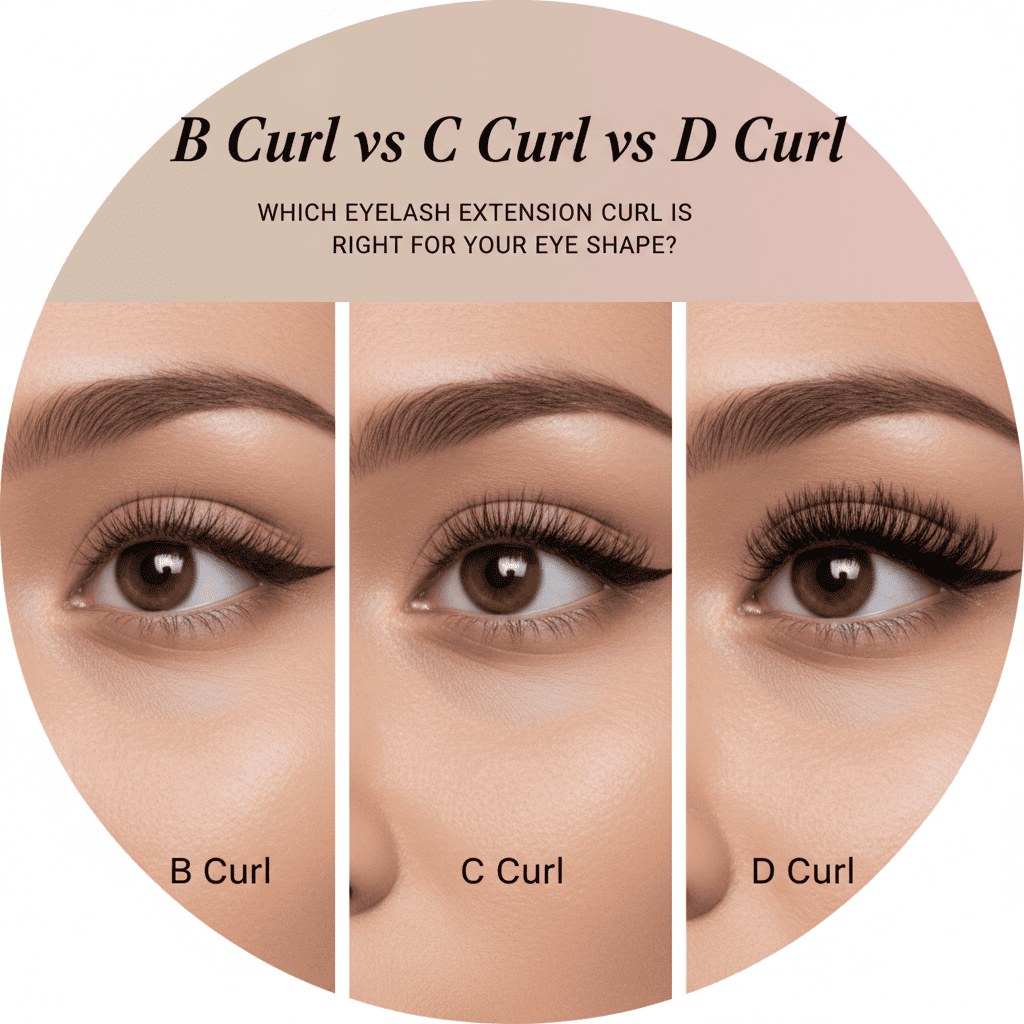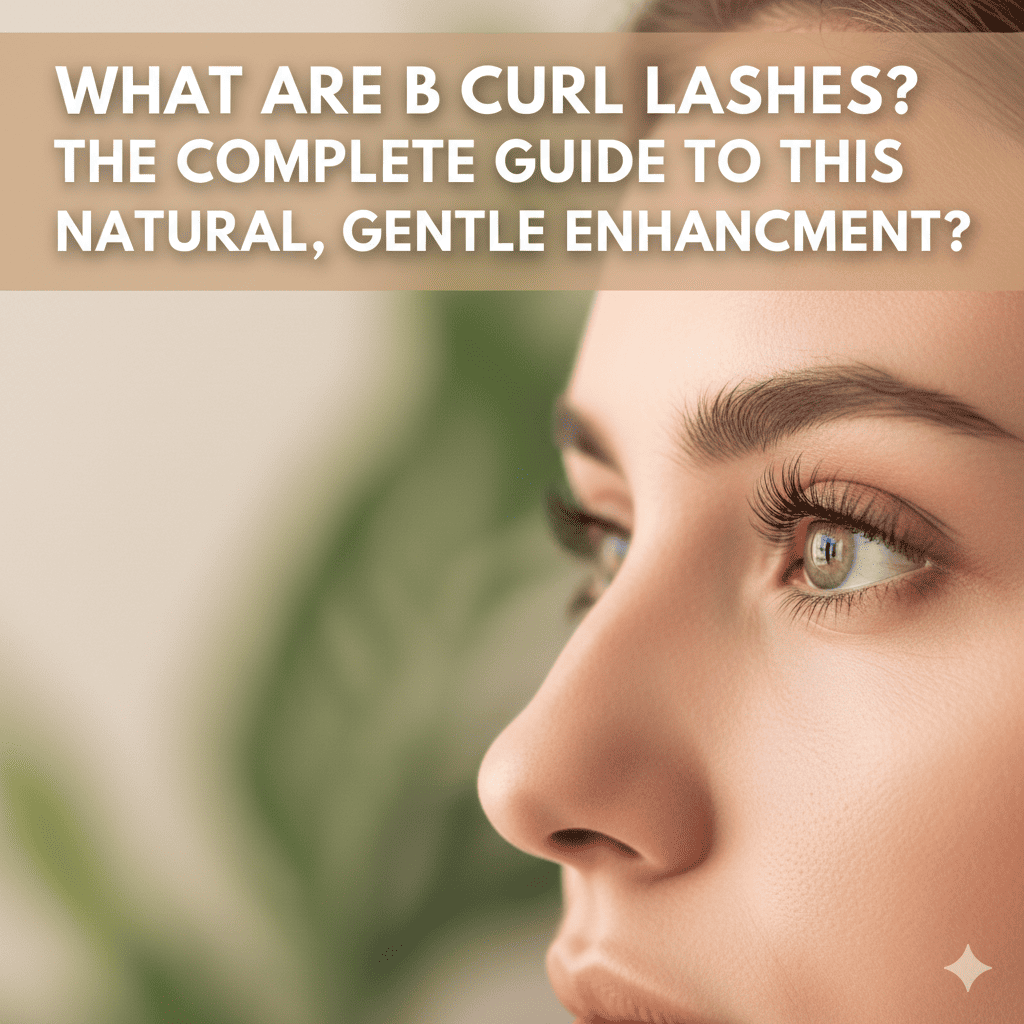In the beauty world, eyelash extensions are all the rage and offer the long, luscious lashes you’ve always dreamed of. But with popularity comes hidden pitfalls, like infections. To navigate this trendy beauty upgrade, it’s crucial to be aware of the risks and how to tackle them.
“Gorgeous lashes are wonderful, but not at the cost of an infection! Here’s how to keep your extensions safe and sound.”
This guide will explore the causes of infections, how to spot symptoms early, and, most importantly, how to keep your eyes healthy while flaunting those amazing lashes. Whether you’re already a lash lover or thinking about getting your first set, knowledge is your best ally for worry-free glam.

What Causes Infected Eyelash Extensions?
Infections from eyelash extensions happen when bacteria, fungi, or viruses get into your lash area. This leads to redness and irritation. A big reason? Poor hygiene. If the tools and materials used for your extensions aren’t clean, they make it easy for germs to spread. Plus, using bad techniques or adhesives with strong chemicals can irritate your skin and eyes, making infections more likely.
Laziness can be risky too! Not cleaning or brushing your extensions regularly? That lets oil, dust, and germs pile up, raising your risk of getting an infection. And if you already have eye issues like blepharitis, you’re even more at risk because of the extra bacteria on your eyelids.
Environment matters as well. Do you swim in chlorinated pools or hang out in dusty areas often? This can let tiny invaders lodge in your lashes. And don’t forget: allergic reactions to lash glues containing stuff like formaldehyde can lead to redness and, yes, infection if not handled quickly.
Common Triggers of Infections in Lash Extensions
Infections from lash extensions might not be rare, but they’re preventable. Let’s break down some common causes:
- Poor Hygiene: When tools or hands aren’t sanitized, bacteria can sneak onto your eyelids during application. Keeping things clean is key!
- Glue Issues: Some adhesives contain irritating ingredients like formaldehyde. This can lead to irritation or allergies that spark infections.
Don’t forget, how you maintain your lash extensions matters too! Failure to clean them regularly lets oils, makeup, and debris build up, creating a perfect bacteria paradise. Always use products made for lash extensions and stick to aftercare guidelines.
Lastly, watch out for overuse. Constantly wearing lash extensions without breaks can stress your natural lashes, causing discomfort and possibly leading to infection. Giving your lashes regular time-offs is crucial to avoid complications.

Lash Glue
Recognizing the Symptoms of Lash Extension Infections
Spotting the signs of a lash extension infection early is crucial. By doing so, you can act quickly and cut down the chances of complications. Remember, infections bring unique symptoms that aren’t always obvious. Catching them early can significantly enhance your treatment results.
- Redness: Look out for noticeable redness around your lash line and eyes. This is a typical hint that irritation or infection might be at play.
- Swelling: Puffy or swollen eyelids? That’s a telltale sign of infection, often paired with redness and itchiness.
- Itching: Persistent, intense itching that doesn’t improve with cleansing might mean an infection.
- Discharge: Unusual discharge or crust around your eyes signals bacteria could be involved.
- Pain or Discomfort: Pain or growing discomfort around your eyes? It’s a red flag showing something’s not right.
- Blurred Vision: Although rarer, blurred vision points to an infection potentially affecting your eyes. Seek medical help at once.
If you notice any of these symptoms, it’s wise to reach out to an eye care expert promptly. Early action prevents minor issues from ballooning into significant problems. So, prioritize your eye health as part of your lash care routine—don’t ignore any warnings!
Early Warning Signs You Shouldn’t Ignore
Pay Attention to Early Signs!
- Persistent Irritation: If your eyes remain irritated for more than a couple of days, it’s time to take notice. What starts as a minor discomfort could mean something more serious.
- Intense Itchiness: A little itchiness is normal at first. But if you’re constantly scratching, you’re at risk for disrupting those lashes and inviting bacteria.
- Lingering Redness: Some redness is expected right after getting your lashes done. However, if it’s still there after the first day, inflammation might be the culprit.
- Unexpected Swelling: Notice any puffy eyelids? This could be a sign of an allergic reaction or an infection.
- Discharge or Burning: These are red flags indicating that something’s wrong at your lash line. Could be bacteria or a poorly applied lash.
If you spot any of these signs, don’t hesitate—reach out to your lash technician or consult a healthcare provider ASAP. It’s better to be safe than sorry!

How to Prevent Infections from Lash Extensions
Prevention is key, especially when it involves your eyes and lash extensions. Choose a salon with skilled, certified technicians. Check reviews and seek recommendations from friends. Don’t hesitate to ask about their cleanliness and sterilization practices.
Before your appointment, discuss any allergies or sensitivities with your lash expert. This allows them to pick the right products, reducing the risk of reactions. Using high-quality, hypoallergenic products can greatly lower infection chances.
After the procedure, maintain good hygiene. Gently cleanse your face daily, avoiding too much pressure on the lash extensions. Use oil-free and gentle cleansers designed for the eyes to keep lashes clean without affecting the adhesive.
Avoid moisture and friction for 24 to 48 hours after getting extensions. This means no saunas, swimming, or steam rooms. Don’t rub your eyes or tug at your lashes to prevent bacteria buildup that might cause infections.
Consider a protective lash sealant as suggested by your technician. It acts as a barrier against dirt and pollutants. Remember, a little care ensures your lash extensions stay safe and stunning.
Pro Tips for Keeping Your Lash Extensions Safe
Keeping your lash extensions stunning and safe involves a few easy steps. First things first, always opt for a licensed and experienced professional. This choice reduces the chance of irritation and infections, ensuring you’re in good hands.
- Lash Hygiene: Clean your eyelash extensions often to clear away any bacteria or debris. This keeps your eyes healthy and your lashes looking great.
- Choose the Right Products: Avoid using oils near your eyes, as they can loosen the adhesive bond of your extensions. Stick to oil-free makeup removers and cleansers.
- Adhesive Matters: Ask your lash tech to use hypoallergenic glue to cut down on allergy risks. Not all glues are the same, so high-quality products are key.
Handle your extensions with care. Don’t rub your eyes, and gently brush through your lashes daily with a clean spoolie to keep them shaped and fluffy. This easy habit prevents tangling and keeps them looking fabulous longer.

The Role of Hygiene in Eyelash Extension Care
Keeping your eyelash extensions clean is essential for their beauty and your eye health. After all, our eyes are delicate, and a lack of cleanliness can lead to issues like itchy, swollen eyelids, or even blepharitis.
Step 1: Always wash your hands well before touching your face or lashes. This reduces the risk of spreading dirt or bacteria.
Step 2: Use a gentle, oil-free cleanser to clean your lashes regularly. You can find special lash cleansers that work better than regular face washes.
- Skip mascara or lash curlers—they can add bacteria and stress the adhesive.
- Comb through your lashes daily with a clean brush to keep them looking great.
Avoid: Cotton pads or swabs near your extensions. They can catch on the fibers and irritate. Use lint-free applicators for cleaning instead.
By following these simple habits, you’ll keep your lash extensions looking fabulous and your eyes healthy.
Understanding the Risks: When Lash Extensions Go Wrong
Lash extensions can give your look that fabulous boost, but they’re not without risks. When things go awry, what might start as a slight irritation can quickly turn into a serious infection. One common issue stems from using improper application techniques. If your technician isn’t well-trained, they might place too much pressure on your natural lashes or glue extensions too near to the lash line. This can harm your natural lashes and up the chances of infection.
Quality matters, too. Low-quality lash adhesives often contain strong chemicals or allergens that can cause bad reactions. Plus, not removing extensions properly might break or even cause the loss of your natural lashes, leading to a higher risk of infection.
Skipping out on aftercare advice only adds to the problem. Some people ignore regular lash hygiene, letting dirt and bacteria pile up—perfect conditions for an infection.
Before you begin your lash extension journey, do a bit of research. Pick reputable salons, check cleanliness standards, and ask about what’s in the products being used. A cautious approach can help you avoid future troubles.

How to Treat an Infected Eyelash Extension
Dealing with an infected eyelash extension can be a real bother, but don’t worry, taking the right steps can help ease your discomfort and protect your eyes. The first step is to see a doctor immediately, so they can check your eyes and give you the right treatment, usually with antibiotic eye drops or cream.
Alongside your doctor’s advice, here are some simple things you can do at home:
- Remove Extensions: If your doctor suggests it, get your lash extensions professionally taken off. It helps reduce irritation and lets your eyes heal better.
- Keep It Clean: Hygiene is super important! Always wash your hands before touching your eyes and skip makeup until you’re healed.
- Warm Compresses: A warm compress can soothe the affected eye. Just make sure it’s clean and press gently.
- Skip Contact Lenses: If you usually wear contacts, switch to glasses until everything’s back to normal to avoid more irritation.
And remember, don’t wait too long to treat an infection. Untreated, it could lead to more serious issues and even affect your vision, so act quickly and take good care of your eyes.
When to Seek Professional Help for Lash Infections
Knowing when to call in the experts for lash extension infections is crucial. While some discomfort might be normal after application, there are certain signs you shouldn’t ignore:
- Persistent Redness and Swelling: If these symptoms don’t improve or get worse, reach out for professional help.
- Constant Pain or Eye Pressure: These sensations require immediate attention from a specialist.
- Discharge or Crusting: Any unusual secretion or buildup around the lash line needs medical evaluation.
- Excessive Itching: This could be a sign of an infection that shouldn’t be ignored.
Don’t self-diagnose or treat an infection. Over-the-counter remedies might not solve the problem and could make it worse. A healthcare professional can provide the right treatment for your needs, ensuring you heal safely.
Remember, prevention is better than cure. Keep your eyelash hygiene a priority and share any concerns with your lash technician or healthcare provider. This way, you can avoid infections and enjoy your lovely extensions without worry!

Cream Glue Remover
The Importance of Aftercare for Lash Extensions
Taking care of your eyelash extensions isn’t optional—it’s necessary for keeping your eyes healthy and your lashes looking fabulous. Follow these simple tips to enjoy gorgeous lashes without worries.
- Keep lashes dry initially: For the first 24-48 hours, avoid getting your lashes wet. This means skipping swimming, saunas, and steamy showers to keep the adhesive strong.
- Say no to oils: Oil-based products can weaken the glue. Stick to oil-free cleansers and skincare around your eyes.
- Brush regularly: Use a clean spoolie brush to gently comb through your lashes every day, preventing tangles and helping them keep their shape.
- Schedule touch-ups: Book refills every 2-3 weeks to maintain a full and fresh lash look.
- Be gentle: Avoid rubbing your eyes, and never pull or twist your extensions.
Good aftercare not only keeps your eyelash extensions in top shape but also reduces health risks. It’s a quick routine that pays off in both beauty and eye wellness. Remember, a little effort today saves you from future troubles!
Can Allergies Cause Eyelash Extension Infections?
Yes, allergies can significantly contribute to infections caused by eyelash extensions! While infections and allergies are different, allergies often increase the risk of getting an infection.
What Happens During an Allergic Reaction? If the skin around your eyes reacts badly to the glue or extensions, you might notice redness, swelling, or irritation. These are signs of an allergic reaction. If left untreated, the allergy can create the perfect environment for infections. Your body’s defenses focus on the allergy, leaving the skin vulnerable to bacteria.
The Impact of Repeat Exposure Regular exposure to allergens in lash glue can worsen sensitivities, increasing the risk of chronic inflammation. This ongoing inflammation can lead to serious issues like blepharitis, a common problem linked to eyelash extension infections. Therefore, knowing your allergic triggers and choosing hypoallergenic products can be key to protecting your eyes.

Natural Remedies for Soothing Infected Lashes
Troubled by an eyelash extension infection? You’re not alone, and there are soothing natural remedies you can try. One favorite is aloe vera gel. It’s famous for calming inflammation and irritation. Just dab a little on the troubled spot for relief.
Or how about a chamomile tea compress? Brew some chamomile tea, let it cool, and soak a clean cloth or cotton pad. Rest it over your closed eyes for 5 to 10 minutes. Chamomile naturally soothes and can ease those irritated eyes.
Coconut oil might be your new best friend. It’s gentle and naturally antibacterial. With clean fingers, lightly apply a bit of virgin coconut oil to the base of your lashes before you hit the hay.
Keep in mind, while these natural options can help, they’re not a substitute for professional care. If your symptoms don’t improve, a healthcare provider can offer the right diagnosis and treatment.
Conclusion
Exploring the world of eyelash extensions? Remember, a bit of caution goes a long way! Being aware of potential risks and maintaining good hygiene can keep your stunning lashes safe and your eyes healthy. If you’re feeling any discomfort or want to ensure your extensions stay fabulous, staying informed is the way to go!
Need some expert advice? Don’t hesitate to reach out to the professionals. Get in touch with UB Lash for personalized guidance and lash care services. We’re here to help you enjoy gorgeous, safe eyelash extensions. Visit us or give us a call today for the care you deserve!

Fanny
Lash Technician
Hi, I’m Fanny, the author of this post.
Over the past 5 years, we have assisted numerous lash salons and technicians across 20 countries to build their lash brand and grow their businesses with high-quality lash extension products.
If you have any questions or need assistance, feel free to reach out for a free consultation or to discuss tailored solutions for your business needs.
More Interesting Posts
Bulk Lash Extension Purchasing: MOQ Negotiation & Volume Discounts

Natural vs Dramatic: The Ultimate C Curl vs D Curl Comparison Guide

B Curl vs C Curl vs D Curl: Which Eyelash Extension Curl is Right for Your Eye Shape?

